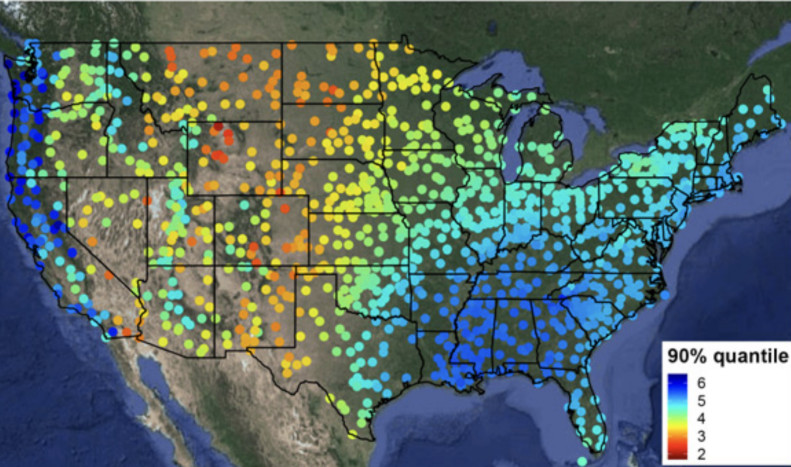Complex Tail Dependency Structures in Space

Modelling extreme observations over space can be quite cumbersome. This is because data are typically measured at a finite number of locations, but extrapolation is required at any other location of the study region. Typically, the focus is on high (or low) quantiles, therefore extrapolation is also required into the joint upper (or lower) tail of the distribution. Finally, a recurrent problem with large heterogeneous regions is the lack of spatial homogeneity.
The literature on spatial extremes is mostly divided into two mainstream approaches: the first approach defines extreme events as block (e.g., annual) maxima, which are typically modelled using max-stable processes. The second approach defines extreme events as high threshold exceedances, which are usually modelled using generalized Pareto processes. Both max-stable and generalized Pareto processes are asymptotic models, in the sense that they have a limiting characterization for block maxima and threshold exceedances, respectively. However, their tail dependence structure is fairly rigid. Moreover, inference for these extreme-value models is known to be particularly hard.
In this project, we tackle these problems by using a divide-and-conquer strategy: we fit a set of copula-based locally stationary spatial models based on Gaussian processes but with heavy tails. These models are in the max-domain of attraction of the non-stationary Brown-Resnick process, with variogram governed by the Hüsler and Reiss copula, and allow the tail dependence structure to flexibly change across space. Inference is possible in a reasonable time since the big-dimensionality problem is broken into a bunch of small-dimensionality problems.


